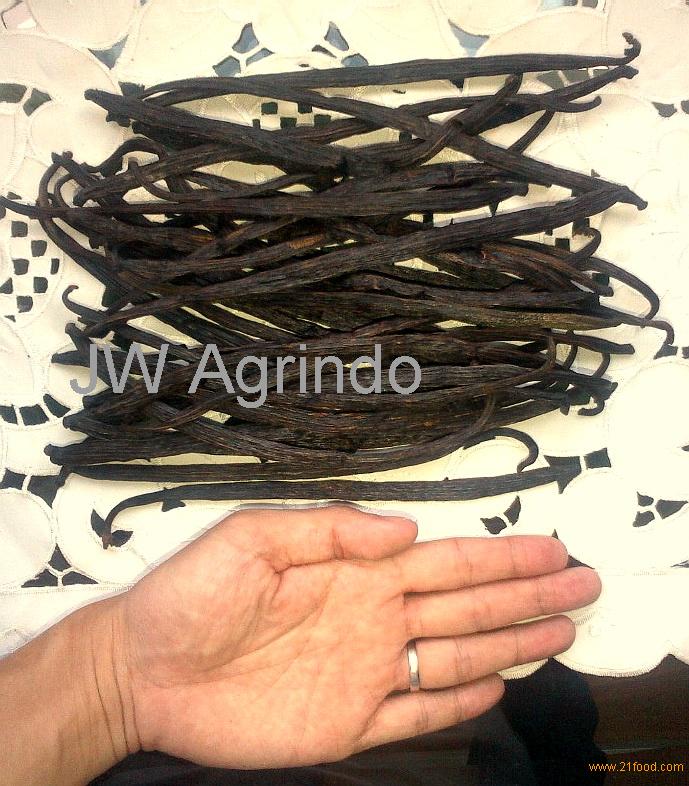

In addition to the season being very short, each flower only blooms for about six hours, so the farmer must move quickly, yet delicately, to ensure each flower is pollinated before it closes and withers away. It is only during the months of July and September when the plants are flowering that the farmers rise early to hand pollinate each orchid bloom. The bees used to pollinate the vanilla orchid are not native to The Islands of Tahiti and so each delicate vanilla flower is pollinated by hand. How Tahitian vanilla is actually pollinated is probably the most fascinating aspect of the spice. Nearly 80 percent of Tahitian vanilla beans are grown on the island of Taha’a, an island that is only 35 square miles, located in the Society Islands about 150 miles east of Tahiti.

Tahitian vanilla production is an extremely labor-intensive process that results in small crops. Growing Tahitian Vanilla Beansīeing a unique species is not the only reason why vanilla from Tahiti is one of the most prized and costly spices in the world. It is a unique species of vanilla bean that has a thinner stem, oval leaves that are longer than they are wide and also has a darker green color. While it is possible to hand cultivate Vanilla planifolia in other places, Tahitian vanilla is unique even among these hand-cultivated varietals due to the fact that it is actually a hybrid of two species which were bred together to create Vanilla tahitensis or Tahitian vanilla. The vanilla produced in the Réunion can also be referred to as Bourbon vanilla and has a slightly different taste and aroma compared to Tahitian vanilla. More than 70 percent of the world’s vanilla still comes from the Indian Ocean region, in Madagascar and Réunion. However, its range is still limited to tropical destinations within 20 degrees to the north or south of the equator. It was in a French colony in the Indian Ocean that it was finally revealed how the vanilla pod could be hand-pollinated, allowing it to be grown elsewhere in the world. The Spanish maintained a hold on production for centuries, as the only way for the orchid to produce a vanilla pod was through fertilization with the assistance of a bee that is native to Central America. It was brought to Europe by Hernán Cortés in the 1500s. Originating in Mexico, the indigenous people that first began cultivating it believed it to be the food of the gods. You may be surprised to learn that vanilla beans are actually the fruit of an orchid, specifically Vanilla planifolia, the only fruit-bearing orchid in the Orchidaceae family. How Does Tahitian Vanilla Compare to Other Vanillas? Once you understand what it takes to produce even a single Tahitian vanilla bean, you will understand why it is the second most costly and valuable spice in the world – second only to saffron. Lacking in depth and sophistication, most artificial vanilla is made from a synthetic version of a natural compound called vanillin, a chemical that can be found in wood pulp, which bears no resemblance to the fragrant, juicy Tahitian vanilla beans of French Polynesia. The flavor profile has notes of sweetness, cherry, and spice. Tahitian vanilla extract is luxurious, intensely aromatic, exotic and even sensual. It is extremely complex and is used in Tahitian cooking for not only sweet confections but also savory dishes. Tasting Tahitian vanilla is a different experience entirely. Unfortunately, most people don’t encounter authentic vanilla in the packaged foods that we mostly associate the vanilla flavor with, and even fewer are tasting authentic Tahitian vanilla, which is only grown in The Islands of Tahiti. Ice cream cones on a hot day, the sweet taste of a warm birthday cake, or a number of other favorite vanilla-flavored baked goods. Imagine the taste of vanilla and you might be imagining the taste of your childhood.


 0 kommentar(er)
0 kommentar(er)
